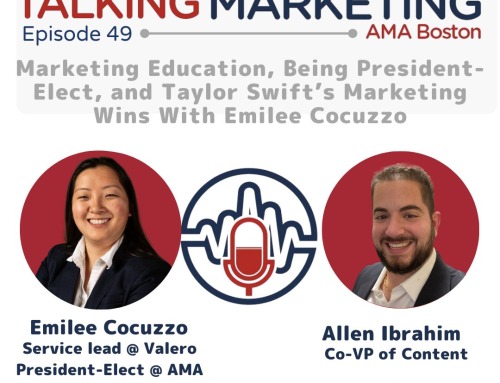Starting or improving one’s career is an exciting and often anxiety-producing effort. The old maxim that it’s best to find your next job while still in your current one remains true. You are dealing from a position of strength and can take time to assess your goals and compare alternatives, a luxury many unemployed people don’t have. Here are a few tips for all job seekers in the search for the best company or position that fits your interests, in advance of AMA Boston’s “Career in Focus” event on April 23rd.
- Define your goals and interests: What are your primary skills? What do you enjoy doing? Do you like working in large organizations, or fast-moving, agile but often more chaotic ones? Before you start your first, or next, search, think through what industry/ies you’re interested in, factoring in the future projections of their success and prominence in your preferred geographical areas, if you have any. In addition, determine what functional positions are most appealing; are you passionate about design, engineering, strategy, number-crunching, sales, or other areas?
- Discover potential companies and positions: Though books can, and have, been written just on this part of the job search, the following snapshot may be useful:
- Research companies and industries: You want to take control of your search, not float resumes out there and hope you will be contacted. Researching your areas of interest, both by industry and your functional area, are the best way to learn and uncover potentially hidden opportunities. Sign up for Google alerts on companies that interest you, visit their websites and social media channels, read about the industry in vertical publications, search for trends and best practices in the functional areas of interest, sign up for targeted e-newsletters, research industry-leading people and companies on LinkedIn , and network with friends in your current or potential field.
- Job fairs: Look for job fairs in your geographic area. Many groups sponsor these, including companies themselves, national and local organizations that develop the job fairs and recruit companies to attend, and state unemployment offices.
- Recruiters: There are two basic types of search firms, retained and contingency. Retained forms work for the company or organization only, and have exclusive rights to a specific search, while contingency firms and recruiters will often work with a candidate directly, and they compete with job postings, other placement firms, and the company’s recruiters. Retained firms will have more high-level positions, and they will contact you if they see a possible match, so they will usually spend time to know you and your skills. Contingency firms or recruiters handle many lower-level searches and are not guaranteed payment, so they don’t have a high level of personal interaction with the candidate.
- Online job sites: Indeed is the primary aggregator of results, while there are many other general sites such as Monster, LinkedIn, Career Builder, Simply Hired, College Recruiter (for younger seekers), US Jobs, and dozens more. Once you have refined your strategy, you can also find many industry-specific sites, such as Dice in technology, Broker Hunter or Financial Job Bank in financial services, HealthCareJobs.com, and many others.
- Alerts: On any of these sites, you can set up alerts to be emailed when a new job is posted based on your criteria of position, geography, salary, etc.
- Networking: Don’t overlook the obvious when trying to increase your knowledge of, and presence in, the marketing scene. Get in contact with friends, family, colleagues and former colleagues, classmates and others who can provide useful insights into their jobs and introduce you to their contacts. Personal connections to an organization are still the best way to break through the clutter. Joining and contributing to both in-person and online industry or job-related groups is another excellent way to network, as it not only increases your contact with like-minded professionals, but also enhances your skills as you learn from your new friends and work on group assignments.
- Improve your LinkedIn profile and connections: For many business-related positions, LinkedIn has become a full-service destination. While researching companies and individuals and enhancing your connections has huge value, don’t forget the “inbound” benefits. By building a powerful profile that accurately conveys your skills and interests with relevant keywords, adding your key accomplishments such as proven results, awards, and articles published, and showing testimonials from colleagues or mentors, you can attract people to find your profile. Just as inbound and content marketing are changing marketing from push to pull, your chances increase if others find you in their search for top performers. LinkedIn itself is a major undertaking – start here with advice from the horse’s mouth.
- Networking through LinkedIn connections is likewise a significant time investment, but with massive potential for you to expand your relevant Start with people you know and send them a connection request, ideally with a brief introductory message. Once you connect with a person, you can ask for a next step such as a conversation or the right to view their first level connections, which are visible once you two are connected. One of the underestimated benefits of LinkedIn is to see those second level connections, especially of people with whom you have a strong relationship.
AMA Boston hopes that these tips will be a good start as you get your “Career in Focus.” We look forward to seeing you at our next event on April 23rd!





